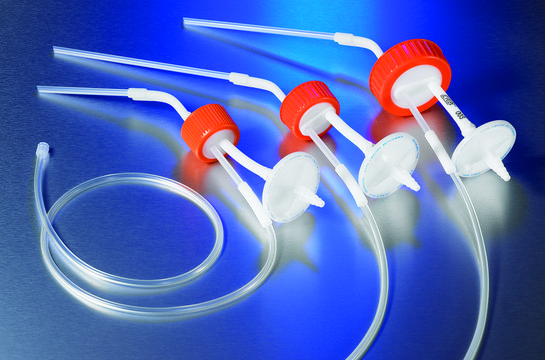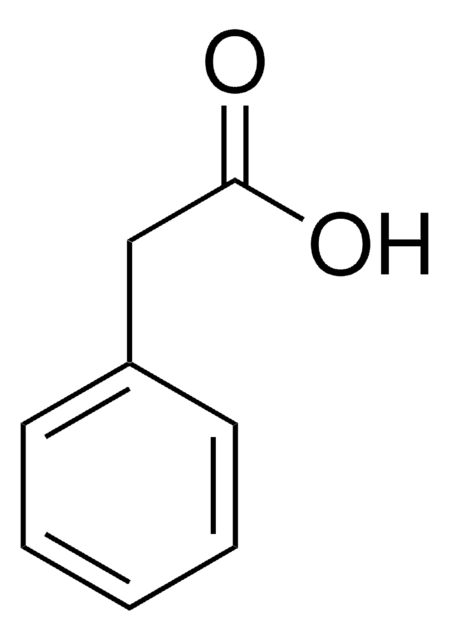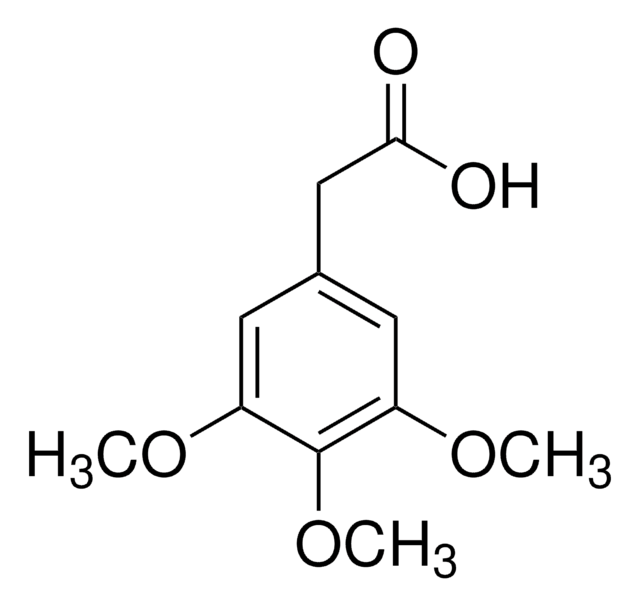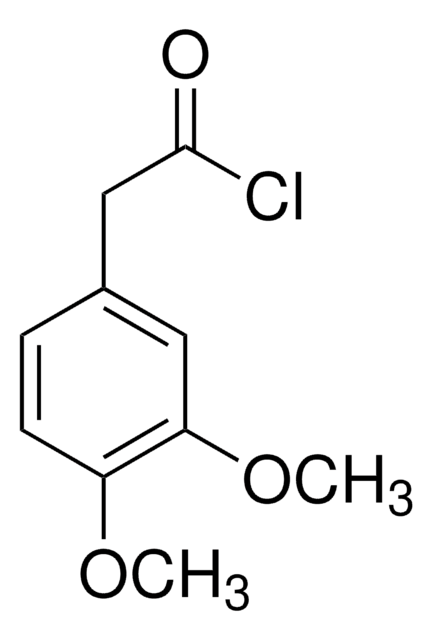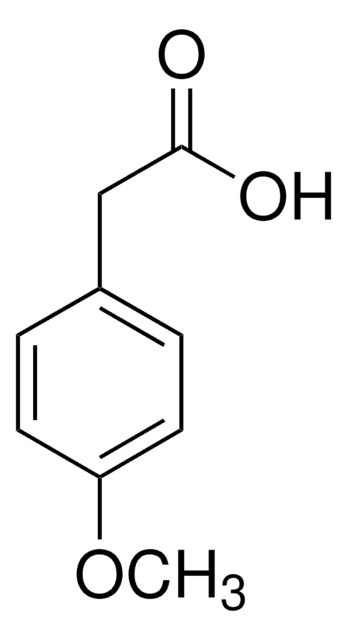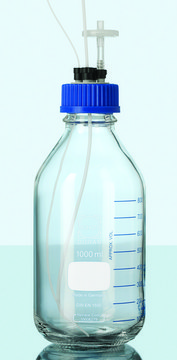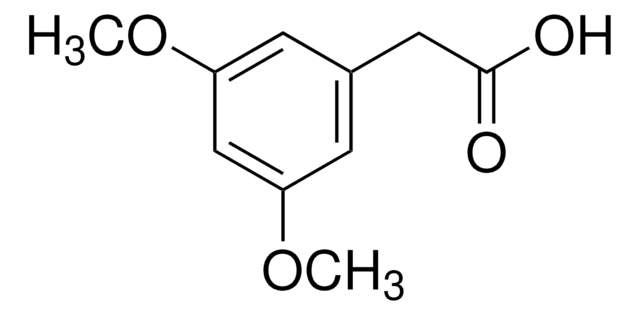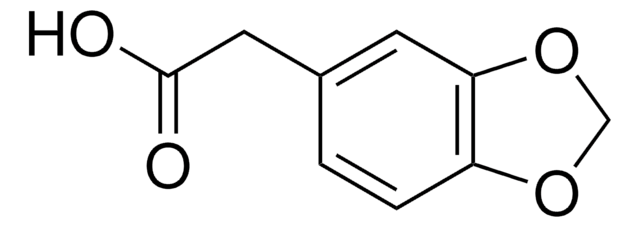D135909
3,4-Dimethoxyphenylacetic acid
98%
Synonym(s):
Homoveratric acid, 3,4-Dimethoxyphenylacetic acid
Sign Into View Organizational & Contract Pricing
All Photos(1)
About This Item
Linear Formula:
(CH3O)2C6H3CH2CO2H
CAS Number:
Molecular Weight:
196.20
Beilstein:
1110282
EC Number:
MDL number:
UNSPSC Code:
12352100
PubChem Substance ID:
NACRES:
NA.22
Recommended Products
Quality Level
Assay
98%
form
powder
mp
96-98 °C (lit.)
SMILES string
COc1ccc(CC(O)=O)cc1OC
InChI
1S/C10H12O4/c1-13-8-4-3-7(6-10(11)12)5-9(8)14-2/h3-5H,6H2,1-2H3,(H,11,12)
InChI key
WUAXWQRULBZETB-UHFFFAOYSA-N
Looking for similar products? Visit Product Comparison Guide
Storage Class Code
11 - Combustible Solids
WGK
WGK 3
Flash Point(F)
Not applicable
Flash Point(C)
Not applicable
Personal Protective Equipment
dust mask type N95 (US), Eyeshields, Gloves
Choose from one of the most recent versions:
Already Own This Product?
Find documentation for the products that you have recently purchased in the Document Library.
Excretion of 3,4-dimethoxyphenethylamine (DMPEA) by acute schizophrenics and controls.
A J Friedhoff et al.
Biological psychiatry, 12(5), 643-654 (1977-10-01)
K Hempel et al.
Biological psychiatry, 17(1), 49-59 (1982-01-01)
A quantitative method for the detection of DMPEA in urine was developed. It is based on the fluorometric determination of DMPEA in the form of its phosphopyridoxyl derivate. The limit of detection is 2 microgram DMPEA per 1 g creatinine.
C G Charlton et al.
Life sciences, 66(22), 2159-2171 (2000-06-02)
L-dopa is the major treatment for Parkinson's disease (PD), but its efficacy is limited by the presence of dyskinesia. The dyskinesia develops over a period of exposure to L-dopa and is related to the dosage, therefore, the cause may involve
[ON THE EFFECT OF NIKETHAMIDE AND HOMOVERATRIC ACID DIMETHYLAMIDE ON RESPIRATION IN INFANTS].
J PROENCA et al.
Monatsschrift fur Kinderheilkunde, 113, 341-343 (1965-04-01)
Wai Mun Loke et al.
The Journal of nutrition, 139(12), 2309-2314 (2009-10-09)
Flavonoids are phytochemicals that are widespread in the human diet. Despite limitations in their bioavailability, experimental and epidemiological data suggest health benefits of flavonoid consumption. Valid biomarkers of flavonoid intake may be useful for estimating exposure in a range of
Our team of scientists has experience in all areas of research including Life Science, Material Science, Chemical Synthesis, Chromatography, Analytical and many others.
Contact Technical Service